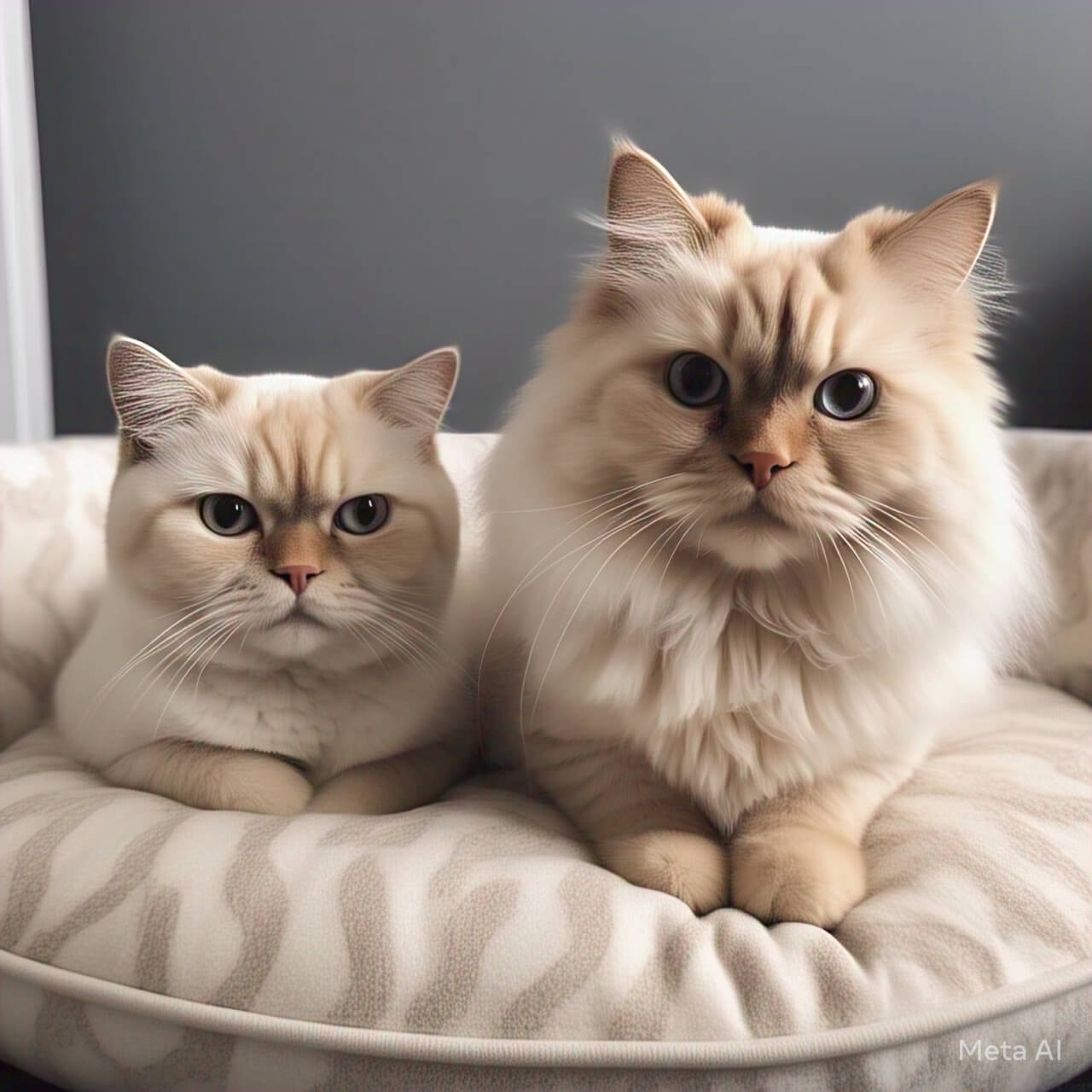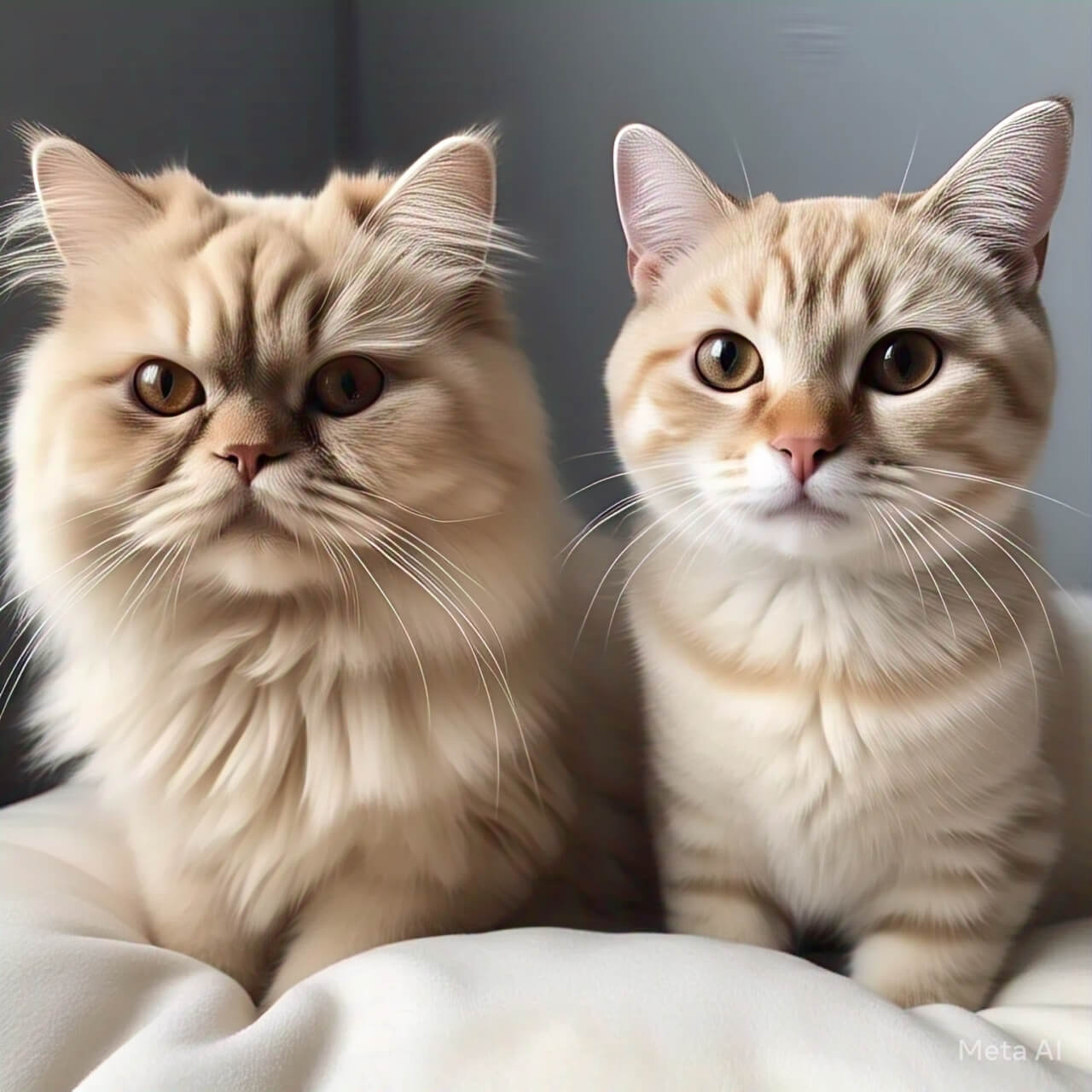Identifying cat breeds can be fun but tricky. Cats come in many shapes, sizes, and colors, and some look very similar. Purebred cats have specific features, while mixed-breed cats can be harder to identify. To recognize a cat’s breed, look at its fur length, color patterns, body shape, ear shape, and eye color. Some breeds, like the Siamese or Persian, have unique looks that make them easy to spot.
Others, like domestic shorthairs, can be mixed with many breeds. Checking behavior can also help—some breeds, like the Bengal, are very active, while others, like the Ragdoll, are calm. If you’re unsure, a vet or a cat DNA test can give you answers. This guide will help you learn how to tell different cat breeds apart.

10 Easy Tips to Identify Cat Breeds
- Check the fur length (Long, medium, or short).
- Look at color patterns (Tabby, solid, or spotted).
- Notice the body shape (Slender, muscular, or round).
- Observe ear shape (Pointed, curled, or folded).
- See eye color (Blue, green, gold, or odd-eyed).
- Watch the tail length (Long, short, or fluffy).
- Study the face shape (Flat, round, or triangular).
- Check for unique features (Like ear tufts or no tail).
- Note the cat’s size (Small, medium, or large).
- Observe behavior (Active, lazy, or vocal).
1. Understanding Fur Length
A cat’s fur length is one of the easiest ways to identify its breed. Cats have three main fur types:
- Short-haired (e.g., Siamese, British Shorthair) – Smooth, easy-to-maintain fur.
- Medium-haired (e.g., Maine Coon, Siberian) – Fluffy but not too long.
- Long-haired (e.g., Persian, Ragdoll) – Thick, flowing fur needing regular grooming.
Some breeds, like the Sphynx, have no fur at all. If a cat has very long, silky fur, it might be a Persian or Himalayan. Short, sleek fur is common in breeds like the Bengal or Abyssinian.
2. Recognizing Color Patterns
Cat coats come in many patterns:
- Tabby – Stripes, swirls, or spots (common in many breeds).
- Solid – One color (like a black Bombay or white Turkish Angora).
- Bicolor – Two colors (often white with another shade).
- Calico/Tortoiseshell – Mix of black, orange, and white.
Siamese cats have “pointed” colors (darker face, paws, and tail).
3. Examining Body Shape
Breeds have different body structures:
- Slender (e.g., Siamese, Oriental Shorthair) – Long, thin bodies.
- Muscular (e.g., Bengal, American Shorthair) – Strong, athletic build.
- Round/Cobby (e.g., Persian, Exotic Shorthair) – Short, stocky bodies.
A Maine Coon is large and rectangular, while a Munchkin has short legs.
4. Looking at Ear Shape
Ears can help identify breeds:
- Pointed (Siamese, Devon Rex).
- Curled (American Curl).
- Folded (Scottish Fold).
- Large & Tufted (Maine Coon).
Some wild-looking cats, like the Savannah, have big, tall ears.
5. Checking Eye Color
Some breeds have unique eye colors:
- Blue eyes – Siamese, Ragdoll, Birman.
- Odd-eyed (One blue, one green) – Some white cats.
- Green/Gold – Common in many breeds.
Persians often have deep copper eyes.
6. Observing Tail Features
Tails vary by breed:
- Long & fluffy (Maine Coon, Norwegian Forest Cat).
- Short or no tail (Manx, Japanese Bobtail).
- Curled (American Ringtail).
A thick, bushy tail may mean a Siberian or Maine Coon.
7. Studying Face Shape
Faces can be:
- Flat-faced (Persian, Exotic Shorthair).
- Triangular (Siamese, Abyssinian).
- Round (British Shorthair, Scottish Fold).
Flat-faced cats (brachycephalic) have pushed-in noses.
8. Noticing Unique Features
Some breeds have special traits:
- Hairless (Sphynx, Peterbald).
- Curly fur (Cornish Rex, Devon Rex).
- Extra toes (Polydactyl cats, like Hemingway cats).
These features make identification easier.
9. Measuring the Cat’s Size
Cats range in size:
- Small (Singapura, Munchkin).
- Medium (Most domestic cats).
- Large (Maine Coon, Ragdoll, Savannah).
Maine Coons can weigh over 20 pounds!
10. Watching Behavior & Personality
Some breeds have distinct personalities:
- Active & playful (Bengal, Abyssinian).
- Calm & cuddly (Ragdoll, Persian).
- Vocal & social (Siamese, Oriental).
A talkative cat may be a Siamese, while a lazy lap cat could be a Persian.

FAQs About Identifying Cat Breeds
| Question | Answer |
|---|---|
| How can I tell my cat’s breed? | Look at fur, color, body shape, and behavior. |
| Are DNA tests accurate for cats? | Yes, they can help identify breed mixes. |
| Do all purebred cats have papers? | Not always, but papers confirm breed. |
| Can vets identify cat breeds? | Sometimes, but they may not be experts. |
| What’s the most common cat breed? | Domestic shorthairs (mixed breeds). |
Now you know how to identify different cat breeds! Just observe their looks and behavior closely. If still unsure, a DNA test can help. Happy cat spotting.









